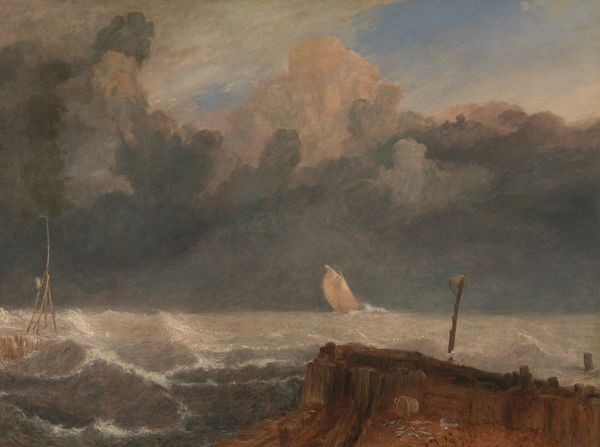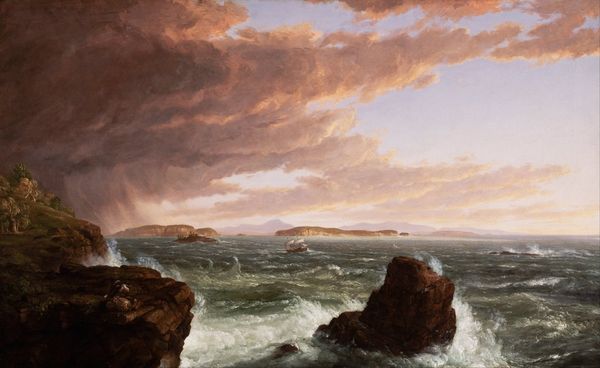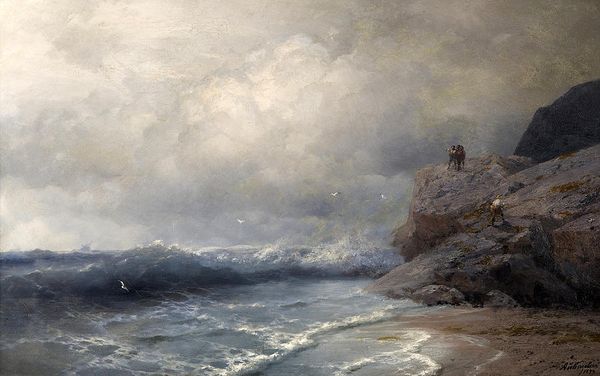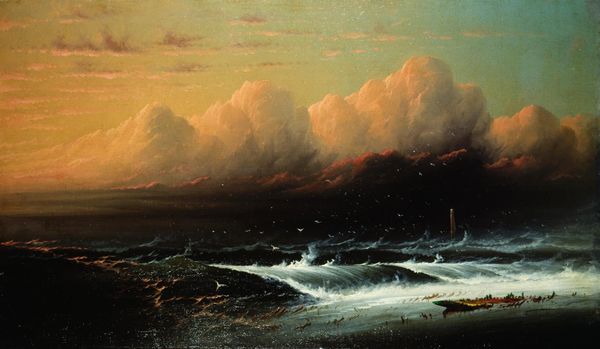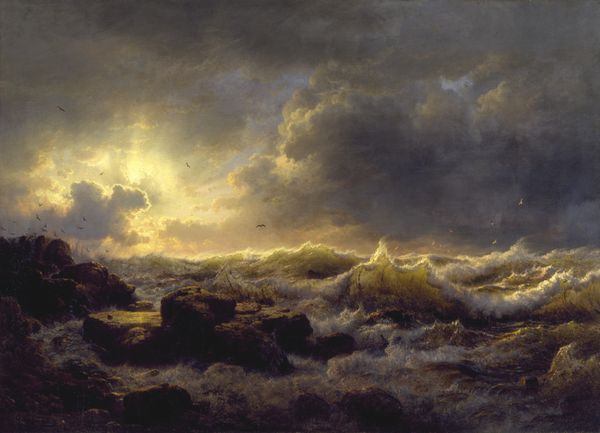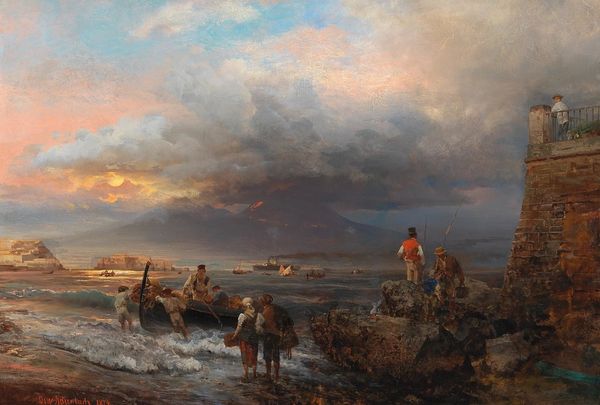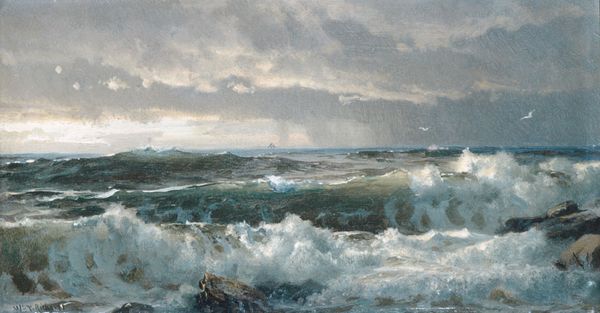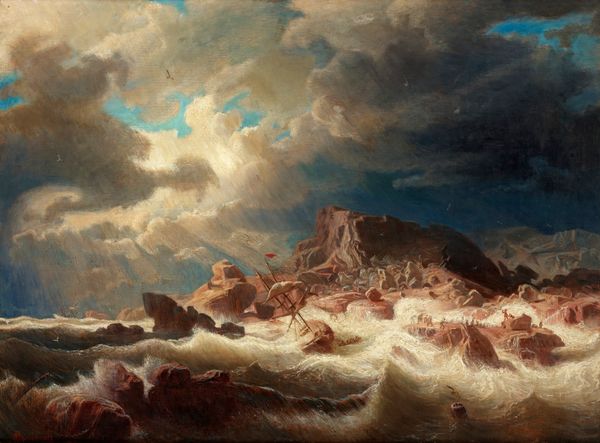
oil-paint
#
sky
#
abandoned
#
oil-paint
#
landscape
#
charcoal drawing
#
ocean
#
romanticism
#
cloud
#
watercolor
#
sea
Copyright: Public domain
Curator: Looking at this landscape, "Sunset on the Coast of Maine near Port Clyde" by Hermann Ottomar Herzog, completed around 1850, what are your initial thoughts? Editor: It strikes me as a very somber yet compelling composition. The dominant grays and browns lend a muted quality to the scene. There’s a real sense of texture in those swirling clouds, almost chaotic against the smoother horizon. Curator: Herzog captures the essence of the sublime in this Romantic seascape, the idea of nature’s overwhelming power reflected in those roiling storm clouds. Seascapes such as this one would often act as symbols of emotional turmoil or perhaps humanity's small place in a vast world. Editor: I notice that there are very distinct spatial layers that are defined with subtle differences in light. Herzog skillfully employs tenebrism, a marked contrast between light and shadow, to direct the viewer’s gaze. Note the interplay between the breaking waves and the darkened structures on the shore, which draws you deeper into the scene, eventually toward that distant ship. Curator: Yes, ships have a rich symbolic association. Ships carry hopes, and aspirations. In this painting the storm clouds give the sense that it's not going to be a safe arrival for this boat and crew. This image pulls from well-worn beliefs associated with the sea being treacherous. Editor: It's also remarkable how Herzog manipulates our perception of depth using atmospheric perspective. Notice how the distant ship and shoreline lack the sharp details we find closer to the foreground, adding to the vastness of the ocean. He carefully balances the realistic and atmospheric conditions here. Curator: And those dark, seemingly abandoned structures could represent the human ambition or a longing for a sense of permanence, as something built can still be so fleeting, particularly next to the endless churning ocean. The impermanence and fragility is ever-present. Editor: Seeing how Herzog carefully renders textures using oil paint gives me a deep respect for his meticulous observation and artistic ability to interpret reality and express his feelings with a complex set of aesthetic approaches. Curator: Ultimately, this artwork reflects our capacity to be humbled and even intimidated by nature’s force. Thank you, it was illuminating to dig deeper into Herzog's symbolic vision together. Editor: It's a potent visual experience that showcases Herzog’s formal brilliance. Thank you.
Comments
No comments
Be the first to comment and join the conversation on the ultimate creative platform.
